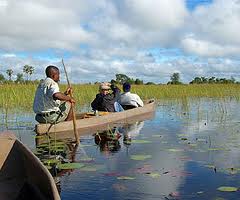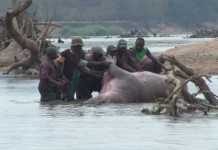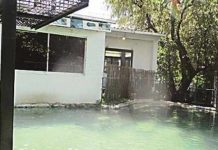In Zambia, however, river tourism has not been explored to the fullest. It is only in Livingstone where part of the Zambezi River has been fully exploited by having tourism sports such as white water rafting, canoeing, kayaking, river boarding, and surfing.
Blessed with three major rivers, several substantial tributaries, and many smaller rivers, as well as vast natural lakes and the enormous Kariba dam, Zambia is one of the most water rich countries in Africa.
The source of the Zambezi is in north-west Zambia and runs through the Barotse flood plains until it forms the border with Zimbabwe.
After providing power from Kariba Dam, it is joined by Kafue River and later Luangwa River before heading out to the Indian Ocean.
The Kafue and Luangwa rivers are the life blood of the Kafue and Luangwa National Parks, teeming with hippos, crocodiles, water birds and plains game coming to drink.
Many other rivers traverse the country with an abundance of delightful waterfalls.
According Zambia Tourist Board generic brochure, the Zambezi River is Africa’s fourth largest river and the country’s longest spanning a total distance of 2,700 kilometers.
It is on this river that the mighty Victoria Falls and the world’s largest man-made Lake, the Lake Kariba lies.
In the southern part of the country is the Kafue River which spills into the Zambezi River and in the Eastern Zambia is the Luangwa River.
The Northern part of the country is endowed with two rivers bordering it namely the Chambeshi and Luangwa rivers, and three lakes that is, Tanganyika, Mweru and Bangweulu.
The Victoria Falls, which is one of the Seven Natural Wonders of the World, is a must see.
At their peak, the Falls plunge into the Zambezi River at about 550,000 cubic metres per second.
The impact of so intense that falling water raises a cloud of vapour that can be seen more than 30 kilometres away. It is because of this that the falls have been known for centuries as Mosi – oa – Tunya, meaning ‘The Smoke That Thunders’.
The falls, which lie in the country’s tourist capital of Livingstone, in the south of Zambia, was declared a World Heritage Site for its unique geological geomorphologic significance.
The Victoria Falls area is rich in biodiversity.
There are eight gorges as fascinating as the falls, as well as the look-out tree, an enormous Zambezi valley baobab in which a platform has been built for an excellent view of the falls.
The Kalambo Falls are the second most significant waterfalls in Zambia.
Located on the Kalambo River some 33 kilometers to the north-west of Mbala town in northern Zambia, the Kalambo Falls are nearly twice as high as the Victoria Falls and are the second highest uninterrupted falls on the African continent at 235 meters high.
Other waterfalls include Ntumbachushi Falls in the Luapula Province, Lumangwe Falls, Ngonye Falls on the Zambezi, Chipempe Falls and the Chishimba Falls located in northern Zambia.
These untapped waterfalls lie in areas of scenic landscapes providing potential investors with rich areas for development.
However, these water resources provide opportunities fishing, white-water rafting, boat cruises, canoeing river boarding, jet boating, and Gorge wing.
Tourism And Arts Minister Sylvia Masebo said preservation of water resources will contribute to promoting sustainable development and management of river tourism.
Ms Masebo said water is one of tourism’s precious resources which need to be preserved.
She said the country has huge water resources which need to be used for various tourism products in a sustainable way.
The minister said when she launched the World Tourism Week which has culminated in the commemoration of the World Tourism Day which fell on September, 27, last month.
This year’s theme for World Tourism Day is ‘Tourism and water’.
Ms Masebo, however, called on the tourism sector to take a leading role to ensure that companies and destinations invest in adequate water management.
Livingstone Tourism Association chairperson Active Monze said this year’s theme was appropriate because it explains how water supports tourism.
Mr Monze said water especially rivers form a major tourism resource by providing spectacular settings, recreation facilities, a sense of heritage and adventure.
“This year’s theme is interesting because water is not really thought to be significant to sustainable tourism,” Mr Monze said.
He said the theme was not usual but important so that people are sensitised on the beauty conserving water.
Mr Monze said there is need to avoid contaminating water bodies as doing so would affect the ecosystem that support not only life but also tourism.
He said maintaining water bodies would ensure sustainable development of the ecosystem.
With this theme, it is expected that people would appreciate the role water play in the tourism industry.

 JOIN DRIVERN TAXI AS PARTNER DRIVER TODAY!
JOIN DRIVERN TAXI AS PARTNER DRIVER TODAY!











